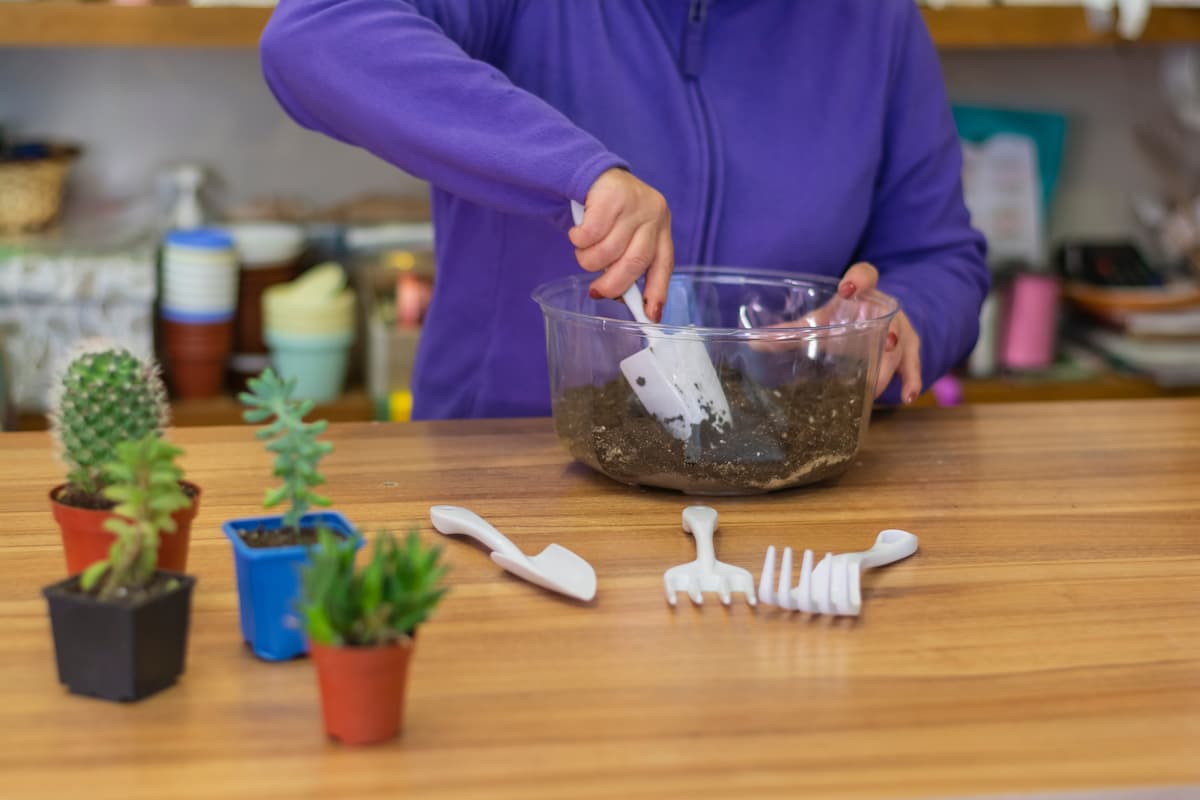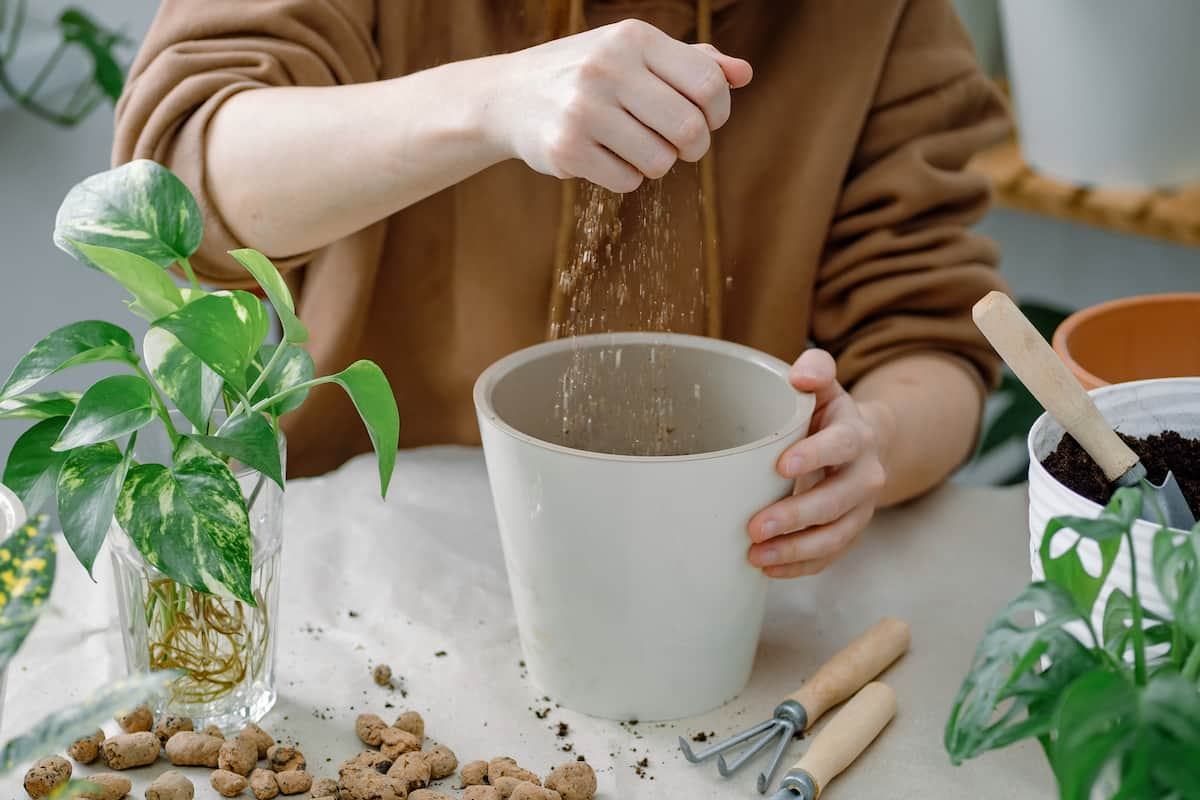Vermiculite is a mineral that is commonly used as an amendment to the soil. Vermiculite is a versatile material used in many ways in the garden. This lightweight, mineral-rich material is a versatile addition to any garden and can be used in various ways to enhance plant growth.

A Guide to Using Vermiculite in Your Garden
What is Vermiculite?
Vermiculite is a naturally occurring mineral often used in gardening and agriculture. It has a high water-holding capacity, making it useful for improving soil drainage and aeration. Vermiculite can also help to loosen compacted soils and improve root growth. When used with plants, vermiculite can help to reduce watering frequency and improve plant growth.
Benefits of Using Vermiculite in the Garden
- Vermiculite helps improve drainage in soil, making it ideal for plants that require well-drained soil.
- Vermiculite can help aerate compacted soil, making it more porous and easier for roots to penetrate.
- Vermiculite can help retain moisture in the soil, making it ideal for use in drought-prone areas or during periods of extended dry weather.
- Vermiculite is sterile and free of weed seeds, so it can be used as a potting medium or as a top dressing around delicate seedling.
- Vermiculite is light and easy to work with, so it’s perfect for use in raised beds or on slopes where digging might be difficult.
How to Use Vermiculite in the Garden?
- Vermiculite has a high cation exchange capacity, which means it can hold onto nutrients and make them available to plants. It also helps aerate compacted soils and improve drainage. Vermiculite can be used alone or with other amendments, such as compost or perlite.
- To use vermiculite in the garden, simply till it into the top few inches of soil before planting. You can also mix it into potting soil or add it to containers as you are planting. For best results, water vermiculite thoroughly after applying it to the garden.
- Vermiculite can be used as a soil amendment or as a potting mix. When using it as a soil amendment, it’s important to work it into the top few inches of soil. This will help improve drainage and aeration.
- Vermiculite can also be used as a seed starter mix. Add some water and vermiculite to a container, then sow your seeds. The vermiculite will help hold moisture, which is essential for germination.
- When using vermiculite in pots or containers, use a well-draining potting mix. Vermiculite alone won’t provide enough drainage for potted plants.
Should I Mix Vermiculite with Soil?
Vermiculite is a mineral mined and processed into small, lightweight pieces resembling mica flakes. It has a high water-absorbency rate, which makes it an ideal soil amendment for gardens. When used with soil, vermiculite can help retain moisture and improve drainage. It can also provide essential nutrients to plants and help reduce compaction in heavy soils.
In case you missed it: Seaweed Fertilizers in Agriculture: How to Make, Benefits, NPK Ratio, and Disadvantages

How Do I Add Vermiculite to My Garden?
Adding vermiculite to your garden is a great way to improve soil quality. Vermiculite is a mineral mined from the earth and then processed into a lightweight, porous material. It has a high absorbency rate, which makes it ideal for use in gardens. Vermiculite can hold large quantities of water and nutrients, making it an excellent amendment for sandy or clay soils. It will also help to aerate compacted soils.
Adding vermiculite to your garden can improve drainage and aeration while helping to retain moisture and nutrients. It can also promote root growth, leading to a healthier, more productive garden. However, before you add vermiculite to your garden, you should consider the following:
- The type of plants you are growing: Some plants do not like too much moisture, so adding vermiculite may not be ideal. Do your research to see if your plants would benefit from extra drainage and aeration provided by vermiculite.
- The climate: If you live in an area with high humidity, adding vermiculite to your garden beds could make conditions too moist for some plants. Again, it is best to do your research beforehand.
- The condition of your soil: If your soil is already dense and compacted, adding vermiculite may not improve the situation. You may need to aerate or amend your soil before adding vermiculite.
What Plants Grow Best in Vermiculite?
- Many different types of plants can benefit from being grown in vermiculite, but some of the most popular include annuals, perennials, vegetables, and herbs.
- Annuals like Impatiens and Petunias typically thrive when their roots spread out in a loose, aerated planting medium like vermiculite.
- Perennials such as Daylilies and Hostas also prefer vermiculite-based planting mixes because they tend to have shallower root systems that benefit from improved drainage.
- Vegetables like Tomatoes and Peppers often do best when their roots can access plenty of water. Vermiculite can help provide this by increasing water retention while allowing excess water to drain.
- Herbs such as Basil and Oregano often need well-drained soil to prevent them from becoming waterlogged, and vermiculite can help with this by providing good drainage and aeration.
How to Use Vermiculite in a Container Garden?
Make sure you purchase a high-quality product from a reputable source. Vermiculite can absorb nutrients and moisture and mix it with other soil amendments such as compost or perlite. When adding vermiculite to your containers, distribute it evenly throughout the soil.
Once you have those steps down, using vermiculite in your container garden is easy. Add the desired amount to your soil mix and water as usual. Vermiculite will help improve drainage and aeration while also retaining moisture and nutrients. It’s an ideal growing medium for many types of plants.
Which is Better, Perlite or Vermiculite?
- Vermiculite and perlite are two of the most popular soil amendments today. Both products have their unique benefits that can help improve plant growth.
- Vermiculite is a natural, porous material that is made from expanded mica. It has a high water-holding capacity and can help to aerate compacted soils. This makes it an ideal amendment for gardens prone to drought conditions. Vermiculite can also absorb nutrients and make them available to plants over time, making it a great choice for slow-release fertilizer applications.
- Perlite, on the other hand, is a man-made product that is made from heated volcanic rock. It has excellent drainage properties and can help to aerate heavy soils. Perlite can also top-dress lawns and gardens to improve drainage and reduce compaction.
- Vermiculite can greatly improve water retention and prevent root rot. For gardens with compacted soils or heavy clay soils, perlite can help improve drainage and promote better root growth.
In case you missed it: Benefits of Neem Cake Fertilizer: How it Differs from Other Composts

Conclusion
Vermiculite is a mineral often used to amend the soil but can also be used as a planting medium. Vermiculite has many plant benefits, including improved drainage and aeration, increased water retention, and a more uniform root zone. Vermiculite is an invaluable resource for any gardener looking to create a more successful garden. From improving soil structure and aeration to providing essential nutrients, vermiculite can help you achieve the lush garden of your dreams.
- Feed Your Flock for Less: Top 10 Tips to Save on Chicken Feed
- Ultimate Guide to Ossabaw Island Hog: Breeding, Raising, Diet, and Care
- Hatching Answers: The Top 10 Reasons Your Chickens Aren’t Laying Eggs
- Eggs and Economics: Breaking Down the Cost of Raising Backyard Chickens
- Defend Your Greens: Proven Methods to Keep Iguanas Out of Your Garden
- Ultimate Guide to Cinnamon Queen Chicken: A Comprehensive Guide for Beginners
- Ultimate Guide to California Tan Chicken: Breeding, Raising, Diet, Egg-Production and Care
- Ultimate Guide to Marsh Daisy Chicken: Breeding, Raising, Diet, and Care
- 10 Types of Chicken Farming Businesses You Can Start for Profits